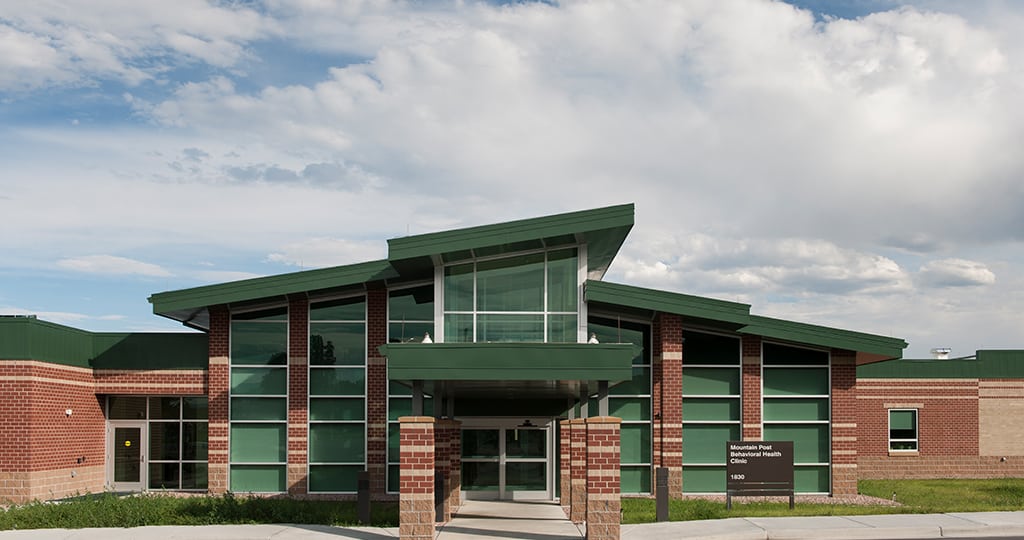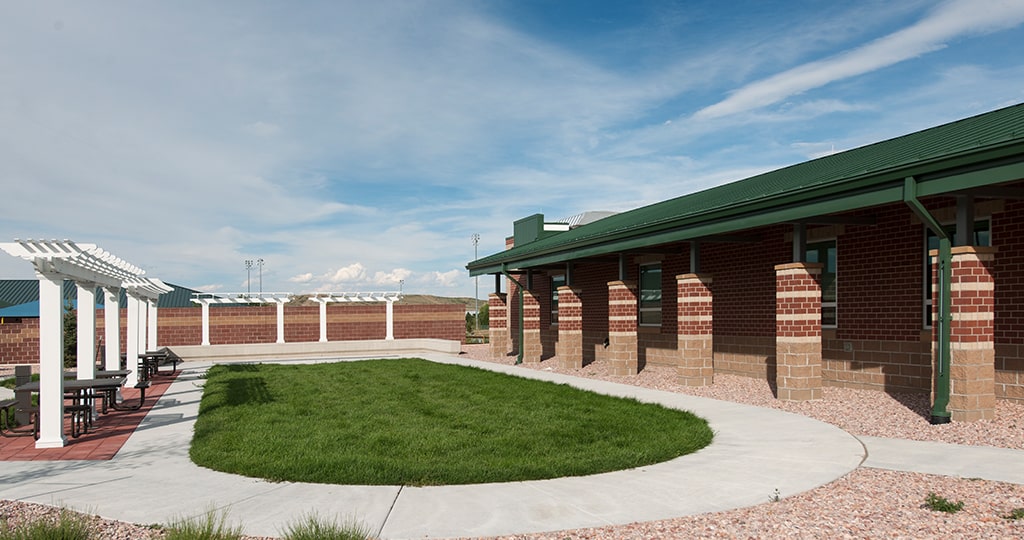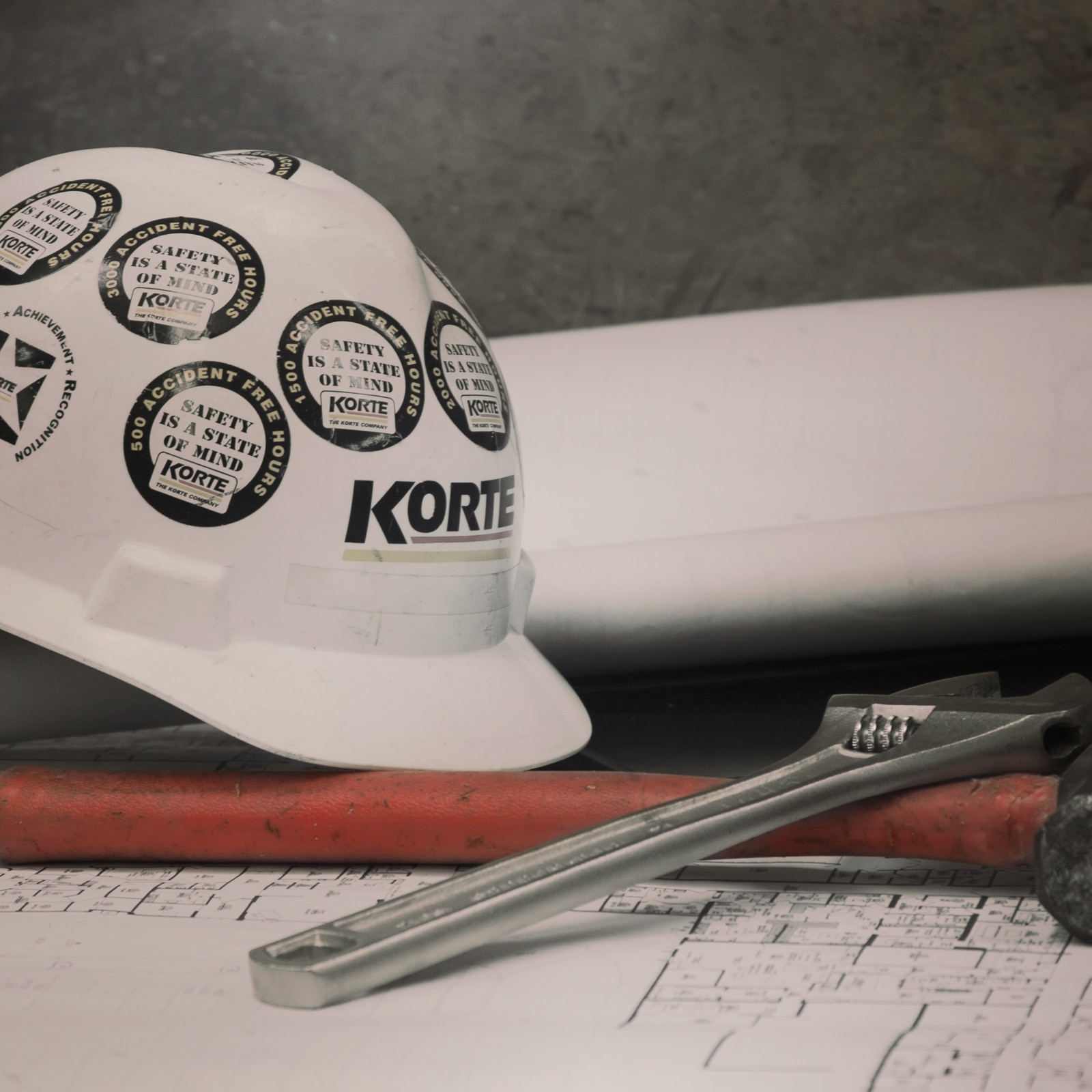Mental health treatment is becoming much more mainstream, attracting funding and spurring development.
The sector was already in the throes of modernization, with services integrating into wider healthcare systems and specialized clinics becoming more visible in their communities.
Then the pandemic happened. Telehealth services, already a growing practice, became the go-to form of treatment. And there was an influx of new patients as rates of depression and other mental health issues increased.
While the full effects are yet to be known, the trends accelerated by the pandemic likely won’t slow down anytime soon. Builders and providers must emphasize flexibility in the built environment to meet patients’ changing needs as new behavioral health norms emerge.
Integration
The ER is a front line for most hospitals.
Patient traffic flow is very important so those requiring life-saving medical treatment can quickly access the ward. But patients experiencing severe behavioral health crises often go to the emergency room even when it’s not the best place for them.
Receiving and redirecting these patients adds to the hard work of ER doctors and nurses who are already stretched thin. Often, behavioral patients must be held in an ER patient room until they can be assessed by behavioral caregivers.
Integrating behavioral health services into hospitals should allow mental health professionals to quickly and efficiently transfer those in crisis out of the ER and into a calmer setting. But demand for staff members who can assess these patients often exceeds supply.
ERs can bridge the gap by having at least one area flexible enough to rapidly transition to a crisis treatment space until the patient can be moved to a dedicated behavioral health unit.
Another integration challenge is that some patients will not be accepted into traditional behavioral health units if they display exceptionally agitated or harmful behavior, so the ER may be the only place they can go. As such, staff often request safe pathways they can use to quickly escape dangerous situations. Medical providers in the emergency department need a safe and controlled patient room or space to monitor and hold these patients as they await transfer to behavioral facilities more capable of managing the patients.
It’s also important that patients requiring transfer to another location can make a seamless transition. Many emergency departments collaborate with specialized behavioral health professionals so they can quickly assess and coordinate care.
Once again, the difficulty can become the length of time that it takes for these assessments to be accomplished (during which the patient remains in the emergency department).
Normalization
Behavioral health patients can feel less stigma around their treatment when facilities are integrated into hospital systems or outpatient clinic clusters where people seek treatment for other medical services.

The safer and more inclusive our behavioral health spaces can feel, the better. Seeking treatment should be a consoling experience, not further traumatizing. Clear wayfinding is a particularly important need for behavioral patients who often experience confusion as a basic symptom.
Gone are the days of clinics painted sterile white, lacking any personal effect and actively separated from the surrounding community. Modern spaces more closely resemble a hotel than the cliché psych ward. The patient spaces include bright and comforting color schemes. General amenities are casually hospitable. Carefully crafted furnishings and hardware that reduce patient and staff risk are emphasized.
At The Korte Company, our designers join with the professionals at Korte Interiors to create spaces that promote patient wellness and recovery under the principles of healing architecture and evidence-based design.
Trends hindered by COVID-19
Before the pandemic, designers and behavioral healthcare leaders worked to make group therapy areas more welcoming, and medical providers worked more closely with patients throughout the entire visit. The spaces were designed to foster close relationships between patients and providers.
Then COVID-19 distancing requirements put the brakes on that.
Now medical providers must offer the same sense of welcoming calm while remaining six feet distant or confined within the boundaries of a plexiglass shell.
The challenge is balancing pandemic/infection safety strategies while still creating the most comfortable and supportive spaces possible for patients.
On the other hand, Design-Builders have to keep in mind that the plexiglass barriers won’t be in place forever. Eventually, it will be important to seamlessly remove social distancing implements, while still allowing for a quick reinstall if necessary.
Korte Interiors partners with dealers who spent the past year providing temporary virus prevention equipment like plexiglass panes and hands-free door attachments for essential workers.
Trends accelerated by COVID-19
While integration is important, so is the option for seclusion. This is especially important in regard to COVID-19. Facilities designed for one-way flow keep patients moving fluidly through the system, reducing potential exposure to other patients and staff members.
Separate entrance and exit paths keep entering patients from rubbing elbows with those who are leaving in order to increase the sense of safety and privacy for everyone.

But this trend had emerged even prior to the pandemic and was only partly motivated by reducing disease transmission. One-way user flows have also proved to be an effective way to reduce patient anxiety as new arrivals don’t cross paths with existing patients bearing signs of recent physical or emotional trauma.
Telehealth expansion in Behavioral Health continues
Telehealth is only getting bigger. Like e-commerce distribution, this long-simmering trend boiled over thanks to the pandemic.
Patients new and old turned to telehealth as stay-at-home orders took effect and the number of people seeking services for depression and other psychological issues surged.
Behavioral health is well suited for telehealth because providers don’t need to physically touch their patients to determine their ailments.
The move toward telehealth has been on the minds of progressive medical providers. Many want to work toward a population health model that focuses on maintaining overall wellness rather than treating illnesses after they occur.
In this model, providers offer whatever advice and services the patient needs while under their care. This means these providers must be regularly engaged with their patients, which would be very difficult to maintain if every visit had to take place in person.
Telehealth has become the go-to method for providing regular, timely exams and engagements with behavioral health patients. It may prove to be a more popular form of treatment than physical visits moving forward as patients continue to seek services from the comfort and privacy of their homes.
Telehealth providers can see multiple patients from a single computer rather than going between patients in multiple exam rooms. This drastically cuts down on cleanup and transition times between exams.
Clinics that heavily implement telehealth services don’t need as many exam rooms, so builders can begin to think of different uses for that space.
That doesn’t mean we should have providers hold exams in their offices. It’s often better for them to maintain a separate exam space free of personal effects that can distract patients and providers alike. But these rooms won’t need to be nearly as large or equipped as an in-person exam space.
These telehealth exam rooms should be located nearby, such as sharing a hallway with the other exam rooms. Providers can schedule telehealth patients during room transition periods, such as when they’re cleaned, which will increase the facility’s overall productivity.
Prepare for future needs, whatever they may be
Behavioral health is a fast-developing healthcare sector. Time will tell if the trends accelerated by the pandemic will hold out in the long run.
Medical leaders and builders must work together to stay ahead of patient needs and ensure their facilities can support the clinicians tasked with delivering exceptional care even in extraordinary circumstances.

Our Design-Build approach emphasizes close collaboration with providers to create flexible facilities capable of meeting the needs of tomorrow.
Maybe integrating behavioral health infrastructure within a main hospital facility makes the most sense for your patient population. Or perhaps the behavioral health needs of your community are better met by a decentralized, clinic cluster approach.
At The Korte Company, we’ve delivered both. Contact us to learn more.
